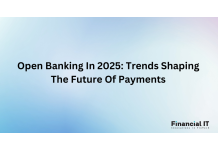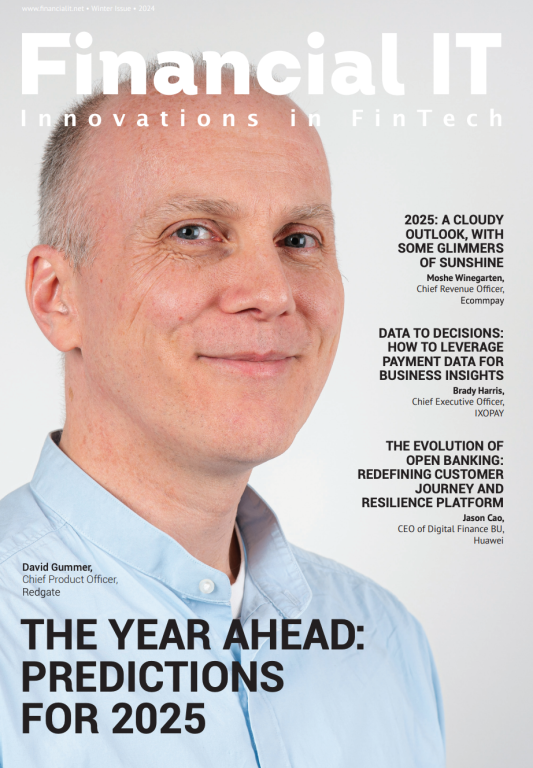Aggregate Or Die? The Reality Facing Banks

- Oscar Sala, Head of Product Strategy at Strands
- 10.11.2016 07:30 am Banks , Oscar Sala is head of Product Strategy at Strands. Oscar is responsible for innovation in our product line and helping consolidate our position as the Fintech partner for banks.
“Should we display the information of current clients on other banks on our online services?
If we know our customers better using data we can gather regarding their positions in other banks, we will surely be able to offer more competitive financial services. But, if we aggregate other banks’ clients’ information, we would have to allow third parties to aggregate our own clients. Would this mean a loss of custom and put our current business model at risk?
What should our strategy be? Should we be “First Movers” or followers? And what will the PSD2 regulation force us to do?”
These issues for debate could quite easily belong to the board of any financial institution. These topics have become trendy and the challenge of taking them on collectively in order to produce effective results has become crucial for the financial sector to survive in the digital world.
All banks worldwide are facing the challenge of providing the best financial service to their clients, based on their customer behavior and needs. The difficulty is to understand which services that the customers feel most comfortable with, independently of which financial party is behind them. This is the reason why aggregation becomes strategic and crucial in offering the best products.
In the information age, the customer is now more informed than ever before and is able to pick and choose the most advantageous service offered from a number of companies rather than have to rely on any one financial institution. With this in mind, does it make sense for a bank to only focus on the services that it provides?
The importance of this task is accentuated by the imminent open access to client bank account data in late 2018, which is bound to lower the barriers to competition in the financial sector. To make this data liberalization process easier, the European Union has created a new regulation framework called Payment Services Directive 2 (PSD2), which will take effect in September 2018.
WHAT IS PSD2 AND WHY SHOULD YOU CARE?
PSD2 will force financial institutions to allow other financial entities - banks or third party financial service providers - to access their client account data with prior permission of the client.
This regulation framework will foster an improvement in global financial services, as it will oblige financial entities to offer services centered on customer needs and behavior.
This regulatory procedure is a clear step towards Open Banking, establishing a win-win situation for all stakeholders promoting a global financial services marketplace. For customers, it facilitates marketplace access to more attractive financial services. Financial entities will be encouraged to develop new services based on client behavior and needs, enabling new business models based on intermediation.
Additionally, PSD2 could be seen as a new regulation to minimize data confidentiality risk breach, as PSD2 will standardize how third parties can access bank customer data and how to store it.
Current aggregation services use a method known as “scraping”, which sees online banking webpages use a crawling process to collect financial data. This occurs after the online banking login step using customer signin details. This data collection process is not held to the same data security standards as banks are subject to.
PSD2 will force all banks to develop a service relationship platform (APIs) to standardize third parties access to collect financial data, tracking all the entities involved in this process.
The PSD2 regulation defines two types of aggregation:
- Consultative - This type of aggregation’s function is to only allow access to client financial data.
- Transactional - This allows a third party to carry out financial transactions through the use of APIs encouraging payment sector disintermediation.
ACCOUNT AGGREGATION: WHAT YOU NEED TO KNOW
PSD2 will lay new ground for customer experience in banking services, by allowing customers to consult the positions they have in different banks in one place.
From the bank’s perspective, aggregation opens the door to a new way of banking and a more user-centric banking experience, based on a better understanding of customer habits and by anticipating their needs.
There are many successful stories in the world of Fintech. They confirm the possibilities that this new way of banking represents and how they are widely embraced by customers.
Many banks across the world are already using these Fintech solutions to disrupt their services, integrating these solutions on Bank Product Portfolios. These Fintech solutions include Personal Financial Management, Machine Learning and new methods to reward clients via credit scoring.
Imagine a typical real life case. Let’s take a UK customer, who has a bank account with Barclays and another with RBS, as well as a credit card account with another provider. Through a one-stop financial portal, this customer will be able to view all three accounts in one place, rather than access all three individually. Many service or product offers could be delivered to the client considering his/her overall position and needs, taking all his/her bank accounts into consideration together.
WHY IS ACCOUNT AGGREGATION SO IMPORTANT?
Convenience
People want ease of access in the form of a one-stop portal, from which their entire finances are manageable. According to a Bank of America report, 81 percent of customers log on to their account via their mobile to view their bank balance.
Understanding your customer
Understanding what the customer really wants is the greatest challenge facing banks right now, it is a must to get all information of customers on all the banks with which they have accounts. In other words, imagine a customer works with 3 different banks. The opportunity cost of offering financial services to customers based on the bank’s own data would equate to making decisions with a 66% rate of uncertainty.
So, through aggregation and using data to predict behavior is crucial for a bank to move fast. This is the reason why many banks have partnered with Fintech companies specialized in aggregation and machine learning.
The new stage of fintech that we are entering is widely expected to see banks and fintechs come together in collaboration. This will allow banks to leverage fintech leadership in customer analytics, machine learning and understanding client behavior to develop more customer-centric account aggregation products.
What are the risks in failing to pursue account aggregation?
If your bank takes a wait-and-see approach, you will definitely be aggregated. This will put your market competitiveness at serious risk.
- You give your competitors a head start
Let’s say another bank works with a fintech company to leverage customer analytics and machine learning. This bank aggregating strategy is bringing customers from a number of other banks for payment services, including your own.
They have become known for their all-your-accounts-in-one-place financial hub and taking advantage of this whole picture to offer attractive financial products for the customers. How would your bank be able to respond? It is not impossible, but it would have to play catch up.
- You risk losing brand loyalty to the aggregator
Customers would interact with their bank on a decreasing basis if they use an aggregated account service with another bank or TPP. This puts brand loyalty to the current or credit account bank under direct threat.
The interaction with the customer would now belong to the aggregator. If the aggregator is another bank, you can bet that that bank would try to eventually get the customer to open an account with them too.
- Your cross-selling opportunities are seriously threatened
The aggregator bank or TPP would be able to exploit their position to promote other financial products. The bank that elects not to pursue account aggregation risks becoming a mere depository for clients.
Sure, they can charge the customer to hold a deposit, or interest if it’s a credit account, but that’s about it. Other verticals where the bank makes money would come under threat from the aggregator.
A unique opportunity for banks
The coming changes instigated by PSD2 offer a unique opportunity for banks. Banking Technological changes have really only just begun tapping into what customers really want from financial services.
Account aggregation will benefit the customer more than any other stakeholder, creating greater competition and more efficient services. It will bring growth to fintech companies, permitting them to continue developing customer-centric services.
The stakeholder who faces the greatest challenge is the banking sector. While change can be difficult – especially in a sector that was for so long relatively changeless – the opportunity for the banking sector is limitless, enabling banks to promote a user-centric banking model and to internationalize faster.
The bank that chooses to get ready for this looming sector-wide disruption will be well placed to grow their customer base, cut their customer churn rate and cement a reputation for innovative, forward-thinking financial services.
A bank can ready itself by pairing with a fintech that helps it to understand their customers. These are fintechs that specialize in and invest continuously in developing greater innovation in big data analysis, customer analytics and machine learning.
Coupled with a sophisticated bank account aggregation strategy, this will open up opportunity for the savvy, adaptable bank in a sector for which change is set to become a constant. Otherwise, prepare for your bank’s customer accounts to be aggregated elsewhere.
This article originally was published on the blog.strands.com.


























